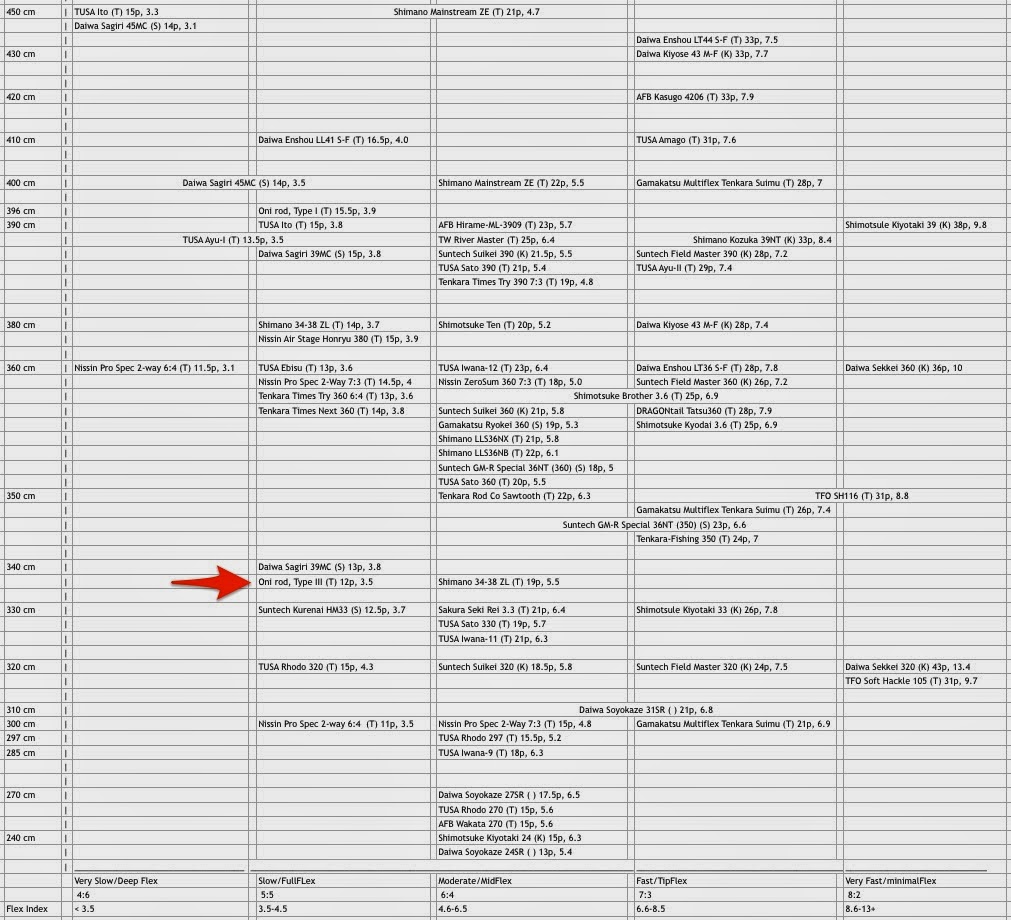I love headwaters fishing. It is both fun and humbling at the same time. It's like my personal version of the WWF (wrestling, not wildlife)-- brief moments of satisfaction interspersed with long stretches of getting beat up! I visited one of my favorite headwaters for the first time this year and was not disappointed.
I parked at the trail head then walked a short ways to the water I wanted to fish. It's still early in the season and the water is flowing with energy. Even though the stream is only a few feet wide, it packs a punch! I almost got knocked over more times than I can count. This creek keeps me on my toes -- so to speak.
I used the TUSA Rhodo. I mainly fished it in its 270 cm configuration but occasionally got to extend it to a whopping 297 cm! Combined with 7 foot line it was just the ticket for this little water.
The day was beautiful; cloudy, rainy and very little breeze. I'll take the rain any day, at least over the wind. I've never seen another person of this water. I occasionally run across hikers and with out fail they are very amazed that there are fish in this creek, let alone that some one is crazy enough to fish it.
The creek is high gradient. It does not look like a stream that is fishable. But I get down into the water and carefully select my casts. Doing this I hook a surprisingly large number of fish. I don't net as many as I hook, as often there is no place to fight the fish. They get swept downstream and then off the hook. That's OK though. I let them go anyway.
Today was no different. I took rainbow after rainbow. Most are about 8 inches, but they are stoat, full bodied little trout. I guess they have to be living in this tumbly, tumultuous water.
The best of the day was a rainbow that was big, for this creek. It filled my hand with its girth and was almost 13 inches! That's huge! At first I thought I was going to loose him to the current, but I was able to ease off the pressure and let him swim and do all the work. Then into the net he came -- a very nice fish indeed.
As I stated above, I love headwaters fishing. It's not for everyone, but it has its own rewards. You have to use your short game in tight quarters, be prepared to loose a lot of flies and fish, and expect to have some sore muscles the next day!
Here is a video of some of the fish:
I parked at the trail head then walked a short ways to the water I wanted to fish. It's still early in the season and the water is flowing with energy. Even though the stream is only a few feet wide, it packs a punch! I almost got knocked over more times than I can count. This creek keeps me on my toes -- so to speak.
I used the TUSA Rhodo. I mainly fished it in its 270 cm configuration but occasionally got to extend it to a whopping 297 cm! Combined with 7 foot line it was just the ticket for this little water.
 |
| TUSA Rhodo |
The day was beautiful; cloudy, rainy and very little breeze. I'll take the rain any day, at least over the wind. I've never seen another person of this water. I occasionally run across hikers and with out fail they are very amazed that there are fish in this creek, let alone that some one is crazy enough to fish it.
The creek is high gradient. It does not look like a stream that is fishable. But I get down into the water and carefully select my casts. Doing this I hook a surprisingly large number of fish. I don't net as many as I hook, as often there is no place to fight the fish. They get swept downstream and then off the hook. That's OK though. I let them go anyway.
Today was no different. I took rainbow after rainbow. Most are about 8 inches, but they are stoat, full bodied little trout. I guess they have to be living in this tumbly, tumultuous water.
The best of the day was a rainbow that was big, for this creek. It filled my hand with its girth and was almost 13 inches! That's huge! At first I thought I was going to loose him to the current, but I was able to ease off the pressure and let him swim and do all the work. Then into the net he came -- a very nice fish indeed.
 |
| The best fish. |
As I stated above, I love headwaters fishing. It's not for everyone, but it has its own rewards. You have to use your short game in tight quarters, be prepared to loose a lot of flies and fish, and expect to have some sore muscles the next day!
Here is a video of some of the fish:





















































